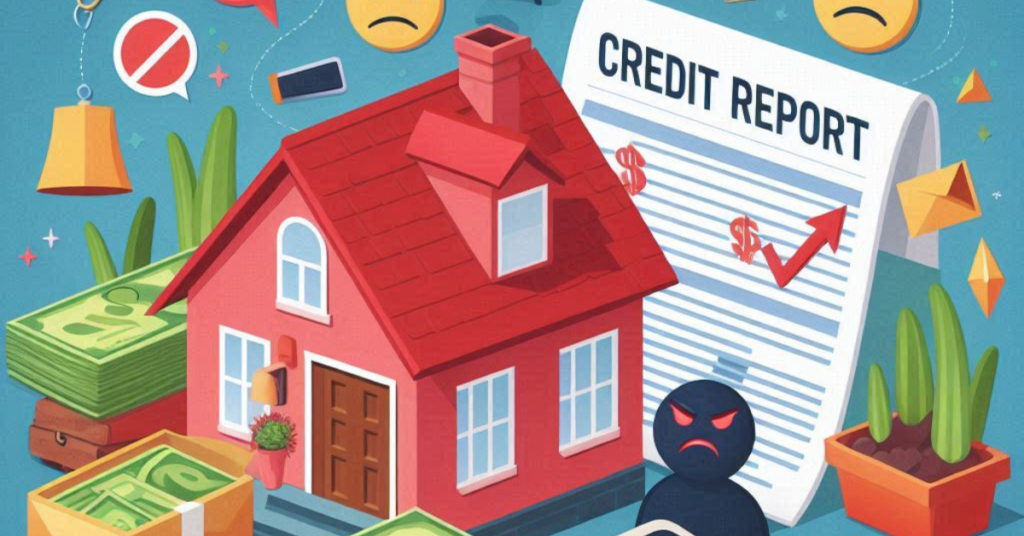The Impact of Negative Items on Your Credit Report: How to Address and Remove Them
Negative items on credit report can have a significant impact on individuals’ financial health and creditworthiness. These items, such as late payments, collections, bankruptcies, and foreclosures, can lower credit scores and hinder access to loans, credit cards, and other financial opportunities. Understanding the implications of negative items is crucial for individuals looking to improve their credit health and secure their financial future.
Understanding the Impact of Negative Items on Credit Scores
Negative items on credit reports have a profound impact on individuals’ credit scores, affecting their ability to access financial opportunities and secure favorable terms on loans and credit cards. Each negative item, whether it’s a late payment, collection account, bankruptcy, or foreclosure, can significantly lower the overall credit score.
As credit scores are used by lenders to assess an individual’s creditworthiness, lower scores resulting from negative items make it harder to qualify for loans, mortgages, and credit cards. Moreover, the presence of negative items signals to lenders that an individual may be a higher credit risk, leading to less favorable interest rates and loan terms.
Furthermore, negative items can linger on credit reports for varying lengths of time, compounding their impact on credit scores and creditworthiness. While some negative items, such as late payments, may remain on credit reports for up to seven years, more severe derogatory marks like bankruptcies can stay for up to ten years. During this time, individuals may benefit from repair credit services. As a result, addressing and removing these negative items becomes crucial for individuals seeking to enhance their credit health and financial stability.
Identifying Negative Items on Your Credit Report
Obtaining a free copy of your credit report from major credit bureaus is the first step in identifying negative items. Reviewing the report carefully allows individuals to identify any negative items present, including late payments, collections, bankruptcies, and foreclosures. Understanding how to interpret credit report information and identify inaccuracies or errors is crucial for effectively addressing negative items and improving credit health.
The credit repair process offers individuals the opportunity to dispute inaccuracies or errors on their credit reports. By working with credit bureaus and creditors, individuals can challenge negative items and request their removal. Providing documentation and evidence to support disputes is essential for increasing the likelihood of success in removing negative items from credit reports. Engaging in the credit repair process is a proactive step towards improving credit health and restoring financial stability.
Removing Negative Items Through Legal Channels
Consumer rights under the Fair Credit Reporting Act (FCRA) and Fair Debt Collection Practices Act (FDCPA) provide individuals with legal recourse for addressing negative items on their credit reports. Filing a formal dispute with credit bureaus and creditors for violations of consumer rights can lead to the removal of negative items. Understanding the legal avenues available for disputing negative items empowers individuals to advocate for their rights and improve their credit health through legal channels.
Alternative Strategies for Managing Negative Items
While credit repair is a common approach to addressing negative items on credit reports, alternative strategies such as debt settlement or debt management plans can also provide relief for individuals facing financial challenges. These alternative strategies involve negotiating directly with creditors to settle debts or establish structured repayment plans. While they may offer potential benefits, it’s essential to thoroughly evaluate these alternatives and consider their implications on credit scores and financial stability.
Debt Settlement: Negotiating Debt Reductions
Debt settlement involves negotiating with creditors to settle outstanding debts for less than the full amount owed. Through negotiation, individuals may be able to reach agreements with creditors to accept a lump-sum payment that is less than the total debt balance. This can provide immediate relief from the burden of debt and may result in the removal of negative items associated with the settled accounts.
However, it’s essential to consider the potential downsides of debt settlement, such as the impact on credit scores and potential taxes for forgiven debt.
Debt Management Plans: Structured Repayment Strategies
Debt management plans (DMPs) offer individuals a structured approach to repaying debts over time. In a DMP, individuals work with credit counseling agencies to develop repayment plans that fit their financial situation. These plans typically involve consolidating multiple debts into a single monthly payment, which is then distributed to creditors.
While DMPs can provide relief from overwhelming debt and may result in the removal of negative items over time, it’s important to carefully consider the fees associated with credit counseling services and the potential impact on credit scores.
Considerations for Alternative Strategies
When considering alternative strategies for managing negative items, individuals should weigh the pros and cons of each approach and consider their specific financial circumstances. While debt settlement and debt management plans can offer relief from the burden of debt and may result in the removal of negative items, they also come with potential drawbacks. These may include negative impacts on credit scores, fees associated with credit counseling services, and potential tax implications for forgiven debt.
Monitoring and Maintaining Positive Credit Habits
Regularly monitoring credit reports for changes and updates is essential for maintaining positive credit health. By staying informed about any changes to their credit reports, individuals can identify and address negative items promptly. Additionally, maintaining positive credit habits, such as making timely payments and keeping credit utilization low, is crucial for preventing future negative items from appearing on credit reports. Utilizing resources and tools for ongoing credit monitoring and maintenance ensures continued progress towards improved credit health and financial success.
Negative items on credit reports can have far-reaching consequences for individuals’ financial health and creditworthiness. Understanding the impact of negative items and taking proactive steps to address and remove them is essential for improving credit health and securing a brighter financial future. By leveraging credit repair strategies, understanding consumer rights, and maintaining positive credit habits, individuals can navigate the complexities of negative items and achieve their financial goals with confidence.



